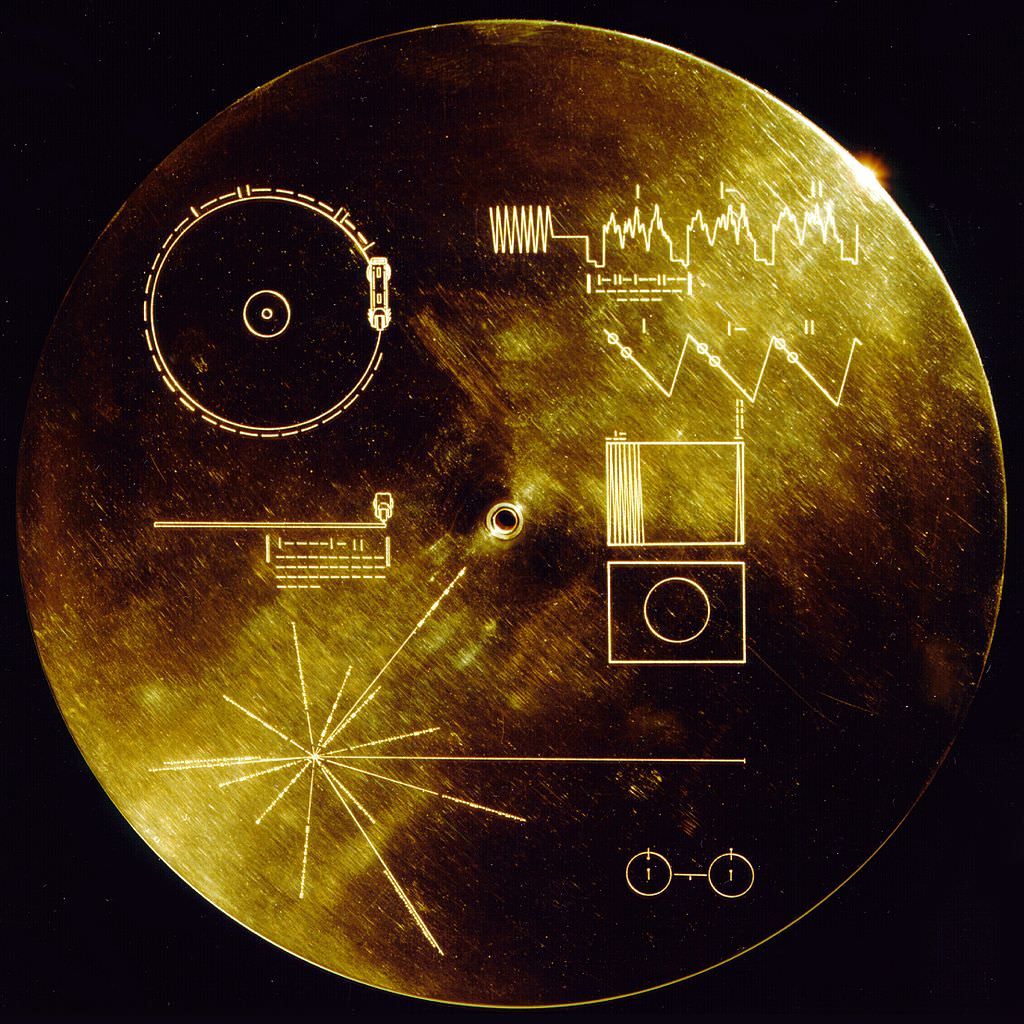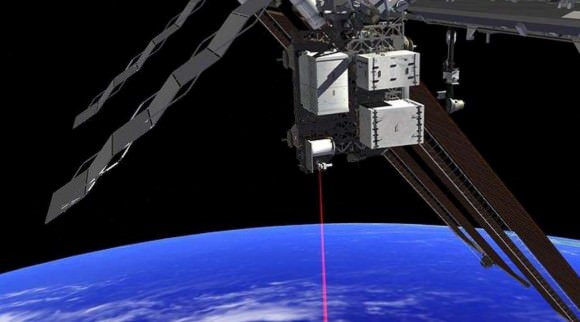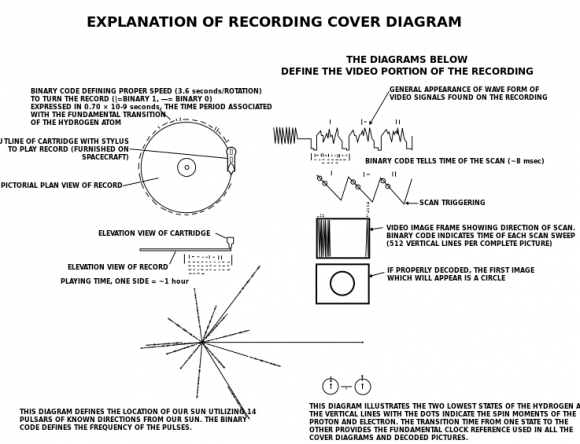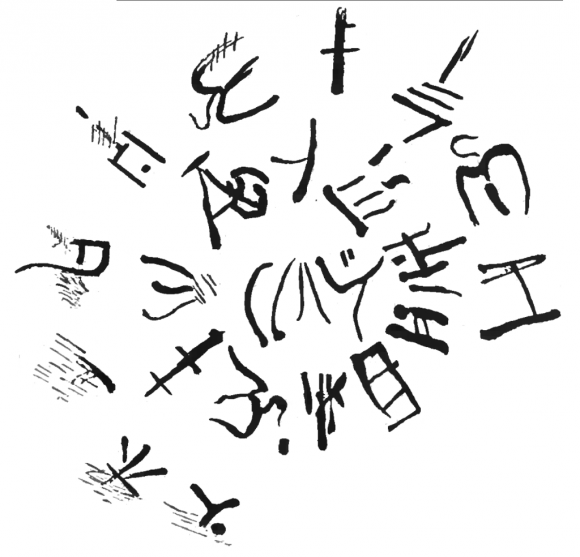On television and in the movies, it’s so easy. Aliens almost always speak English (at least in America they do). If it’s explained at all, we are typically told that they learned it by intercepting communications with our astronauts, or tapping into our television broadcasts. A universal translator device instantly abolishes communication difficulties. Hollywood aliens are, of course, human beings in costumes (these days augmented by computer graphics). They are equipped, as are we all, with a human brain, a human larynx, and human vocal cords; all singular products of the distinctive evolutionary history of our species.
Real extraterrestrials, if they exist, will be the product of a different evolutionary history, played out on another world.
They will know no human language, and be unfamiliar with the typical activities of human beings. Here on Earth no archeologist has ever deciphered an ancient script without knowing the language it corresponds to, even though such scripts deal with recognizable human activities. How could we ever devise a message that aliens could understand? Could we ever understand a message they sent to us? Communicating with alien minds may be one of the most daunting challenges the human intellect has ever faced.
In mid-November, the SETI Institute in Mountain View, California sponsored an academic conference on the problem interstellar communication ‘Communicating across the Cosmos’. The conference drew 17 speakers from a variety of disciplines, including linguistics, anthropology, archeology, mathematics, cognitive science, radio astronomy, and art. In this final installment, we will search for clues to a solution to the daunting problem of making ourselves understood to an extraterrestrial civilization.
Conference presenter and archeologist Paul Wason believes that the history of archeology provides an important lesson for how we might devise a message that can be deciphered by extraterrestrials. In the early 19th century the French archeologist Jean-Francois Champollion solved one of the great riddles of his field by deciphering Egyptian hieroglyphics. The critical clue was provided by an artifact discovered in 1799 in an Egyptian town that Europeans called Rosetta. It became known as the Rosetta stone.
The stone contained the same inscription in three different scripts. One of them was Egyptian hieroglyphics, and another was Greek, which Champollion knew how to read. Champollion used the Greek to decipher the hieroglyphics. Could we use the same strategy to create a cosmic Rosetta stone? Like Wason, Carl Sagan also grasped the importance of the Rosetta stone, and discussed it extensively in his 1980’s book and television series Cosmos. To create a cosmic Rosetta stone, we would need a language to stand in the role of Greek. It would need to be known both to us, and to the aliens. Could there possibly be such a thing?
Many mathematicians and physical scientists involved in SETI believe that mathematical and physical concepts could play the needed role. According to mathematician and conference speaker Carl DeVito, the natural numbers (0, 1, 2, 3 …) are useful to humans in dealing with the cyclical processes that are a everywhere in nature, and probably arise universally in the minds of intelligent beings. Astronomers have strong evidence that the laws of physics and chemistry worked out in laboratories here on Earth hold everywhere in the universe. That being the case, they hope that humans and aliens share a common understanding of basic concepts in these fields. If this is so, then such concepts might play the same role that Greek did for Champollion. SETI pioneers Carl Sagan and Frank Drake, along with their collaborators, employed a rudimentary version of this strategy when they constructed the message encoded on the phonographic record launched into space in 1977 aboard the Voyager 1 and 2 spacecraft. These spacecraft hurtled into interstellar space following the completion of their missions to explore the outer solar system.


Sagan, Drake, and their collaborators first used symbols in an attempt to communicate how humans represent the natural numbers using binary and base ten numerals. They used another set of symbols to depict some properties of the hydrogen atom, which they used to establish standards of distance and time. The distance and time standards were used repeatedly throughout the digital image portion of the message to specify the sizes and time scales depicted. The Voyager record included a greeting from then President Carter encoded as English text. Sagan, Drake, and their collaborators didn’t even attempt the monumental, and perhaps impossible, task of explaining President Carter’s text statement using their Rosetta stone.
Much like Wason and Sagan, computer scientist and conference presenter Kim Binsted, felt that the solution to interstellar communication lies in constructing a pidgin, a simplified version of a language developed to communicate between groups that share no language in common. She was doubtful though, that a cosmic Rosetta stone based on physics and math would let humans and aliens communicate about anything other than physics and math. It might never, for example, provide a way to convey the President’s good wishes. The hieroglyphics of the Rosetta stone were decipherable, in part, because they described the familiar human activities of an Egyptian pharaoh. Humans are clueless about what sorts of activities aliens typically engage in, and aliens are equally clueless about us. It’s hard to see how a Rosetta stone based on physics could bridge this sort of gap.
Philosophers Nicholas Rescher and Andre Kukla, neither of whom presented at the conference, have raised a more fundamental objection. They question whether extraterrestrials would use the same concepts to understand the physical and chemical world that we do. The concepts that modern western science uses to understand the physical world surely reflect the structure of that world. But they also reflect the history of our culture and the structure of our minds. Since aliens would differ from humans on both counts, it’s at least possible that their physical, and even their mathematical concepts might be different from ours. If that’s so, then physics can’t play the role that Greek did for Champollion. Every path forward is full of unknowns and difficulties, and Kim Binsted doubts a solution is possible.
There is a glimmering of hope for another kind of Rosetta stone based on another sort of “Greek”. Given the central role that visual images played in the Voyager message, it’s surprising that image based communication strategies didn’t receive greater emphasis at the conference. It’s true that here on Earth; animals have evolved a wide variety of non-visual ways to sense their surroundings. Some fishes can sense their environments by generating and detecting electric fields in the water. Many fish can use fields of water flow around their bodies to detect nearby objects. Bats, along with dolphins and whales, have evolved a sonar system, emitting sounds and analyzing their returning echoes. Scorpions can sense ground vibrations, elephants can hear sounds below the range of human hearing, and dogs have a remarkably acute sense of smell, to name just a few examples. Still, almost every Earthly animal has eyes of some sort.
Earthly evolution has invented vision several times, in different animal lineages. Vision is especially important for larger animals that live on land. This is because larger bodies can make larger eyes and larger eyes can give sharper vision and better light gathering abilities. Land environments are typically better lit than aquatic ones. Birds and mammals are the Earthly animals with the biggest and most sophisticated brains, and they also have the most acute vision.
Are alien environments likely to be well lit? Exoplanet hunters have focused their efforts on finding planets like the Earth, rocky terrestrial planets at the right distance from their star for temperatures to be in the range where water is a liquid. They have shown us that such worlds are fairly commonplace in the cosmos. The daytime surfaces of these exoplanets are likely to be flooded with visible light, just as is Earth. This light may be necessary for life on such a world, because most life on Earth depends on the energy of sunlight as trapped by green plants. For large, land dwelling animals in this kind of environment, vision provides more information, at a distance, than any other sense can. Since it evolved numerous times on Earth, it’s likely to do so elsewhere as well.

The human visual system gathers information about a three dimensional world of objects and surfaces, partly by using motion cues. We have the ability to represent that world in two dimensions, using images. Kim Binsted worried that an alien visual system might not be capable of making sense of pictures made by humans. This worry was a potent one for the stick figures and line drawings that played such a prominent role in the pioneering interstellar messages of the 70’s. Those kinds of depictions use abstract visual conventions that an alien viewer might find impossible to figure out. Today, though, we needn’t worry about stick figures, because the information revolution gives us the ability to send high definition video. Still, we can’t be sure what an alien visual system would make of imagery encoded with the human visual system in mind.
Video imagery may provide a promising complement or alternative to the abstractions of physics and chemistry as the “Greek” for a cosmic Rosetta stone. If the aliens live on a planet like Earth, with liquid water on its surface, then we will share a mutual familiarity with water’s many manifestations. Just like us, aliens will have seen rain and snow, oceans, rivers, lakes, ponds, clouds, fog, and rainbows. If they have a sense of hearing, over a range of sound frequencies at least somewhat similar to ours, they will have heard waves crashing on beaches, rain hitting the ground, gurgling brooks, and the splash of a pebble dropped into a pond. When the senses work together to confirm one another, the certainty of perceptual recognition is even greater.
An audio-video movie depicting the mutually familiar phenomena of water could be just the bridge we need to cross the gulf of mutual incomprehension. This splashy, gurgling “Greek” could be the key to helping the aliens understand our audio-visual and still images, and ultimately, our symbols. As with the Voyager record, a simpler symbol system would first be needed to communicate to the aliens about how to view and listen to the presentation. That might be a big stumbling block. In the case of Voyager, a stylus head for playing the record was included on the spacecraft, which made it simpler to explain how to play it. A Rosetta stone that led the extraterrestrials to an understanding of our images could provide a means of communication extending well beyond the topics of physics, chemistry, and math. Several conference participants felt that imagery might help to convey things about human altruism, cooperation, morality, and aesthetic sensibilities.
The main message of the ‘Communicating across the Cosmos’ conference is a recognition of just how hard the problem of making ourselves understood to aliens will be. Kim Binsted ended her talk on a faint note of optimism. Even if all else fails, she supposed, there is something we can still communicate to the aliens. She showed a slide of her home doorbell. When it rings, she said, it conveys the message that someone is there, and where they are. It shows intent to communicate, and a benign willingness to reveal one’s presence. Even if it can’t be interpreted, an interstellar message conveys the information that a doorbell conveys. That message, the message that someone is there, would still be of monumental importance.

Previous articles in this series:
Part 1: Shouting into the Darkness
Part 2: Petabytes from the Stars
Part 3: Bridging the Vast Gulf
References and Further Reading:
Communicating across the Cosmos: How can we make ourselves understood by other civilizations in the galaxy (2014), SETI Institute Conference Website.
F. Cain (2013) How Could We Find Aliens? The Search for Extraterrestrial Intelligence (SETI), Universe Today.
F. Cain (2013) Where Are All The Aliens? The Fermi Paradox, Universe Today.
A. Kukla (2010) Extraterrestrials: A Philosophical Perspective, Rowman and Littlefield Publishers Inc. Plymouth, UK.
M. F. Land and D-E. Nilsson (2002), Animal Eyes, Oxford University Press.
N. Rescher (1985) Extraterrestrial Science, in Extraterrestrials: Science and Alien Intelligence, Edited by E. Regis, Cambridge University Press, Cambridge, UK.
C. Sagan, F. D. Drake, A. Druyan, T. Ferris, J. Lomberg, L. S. Sagan, (1978) Murmurs of Earth: The Voyager Interstellar Record. Random House, New York.
C. Sagan (1980) Cosmos, Random House, New York.
J. J. Vitti (2013) Cephalopod cognition in an evolutionary context: Implications for ethology, Biosemiotics, 6:393-401.





